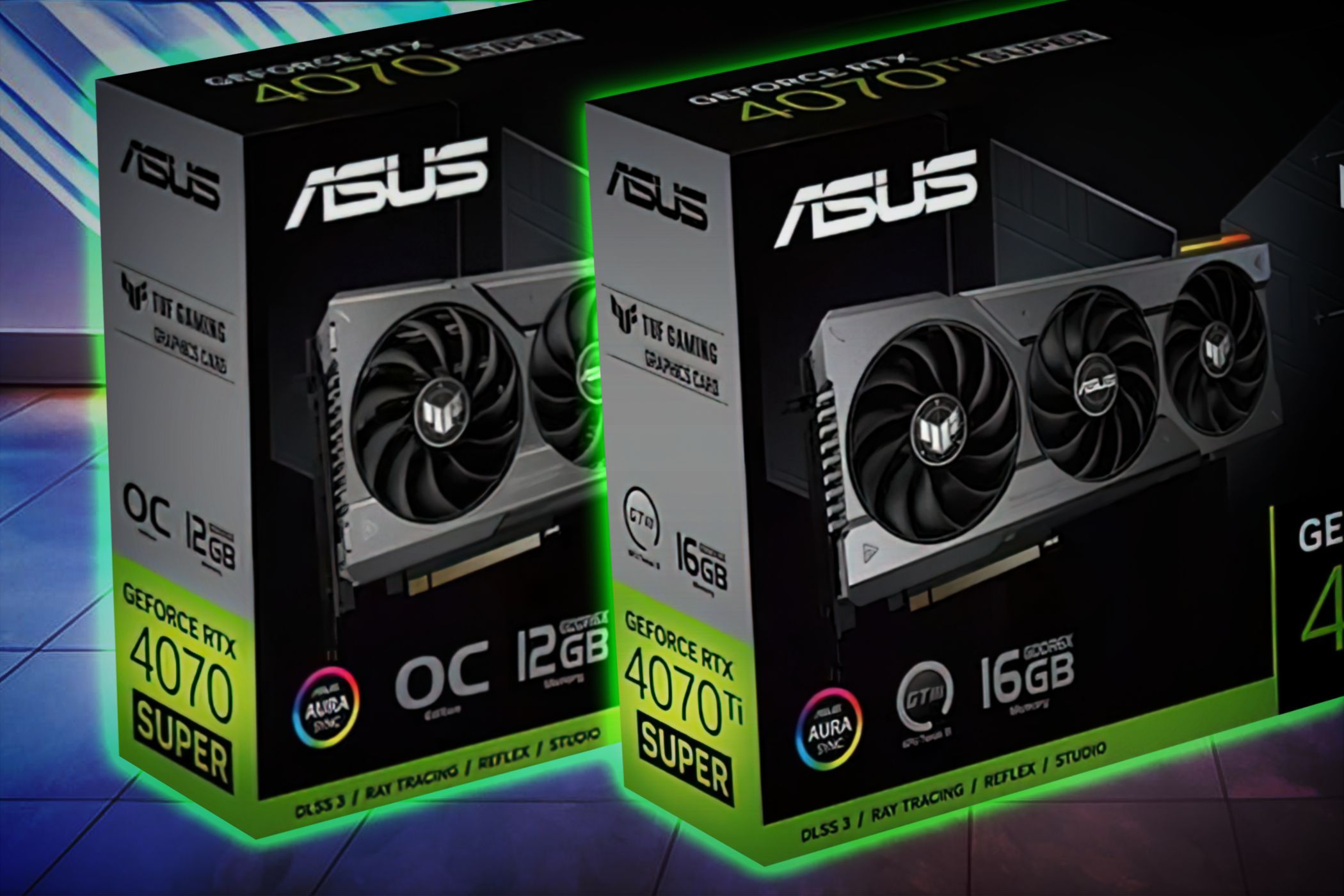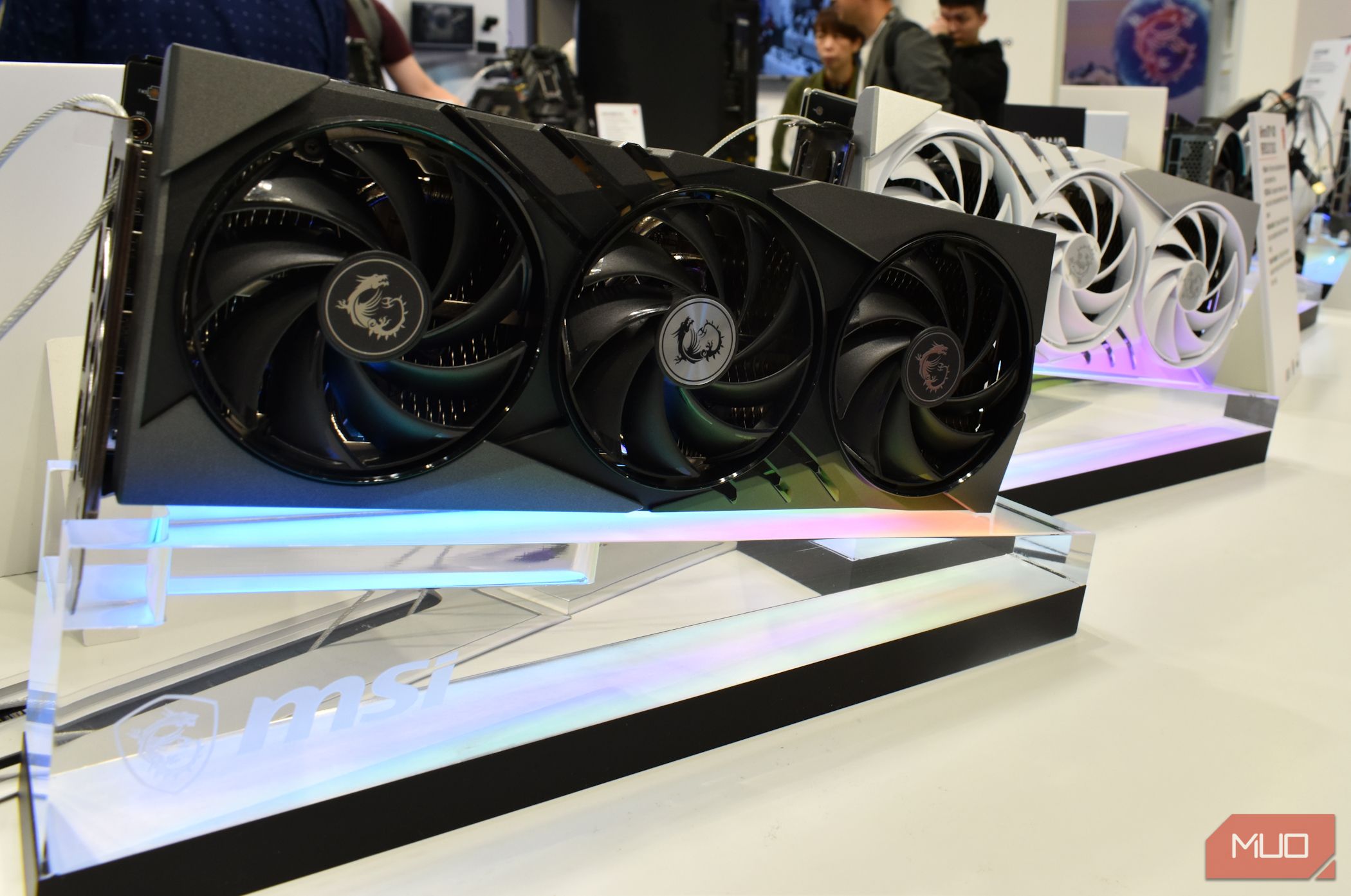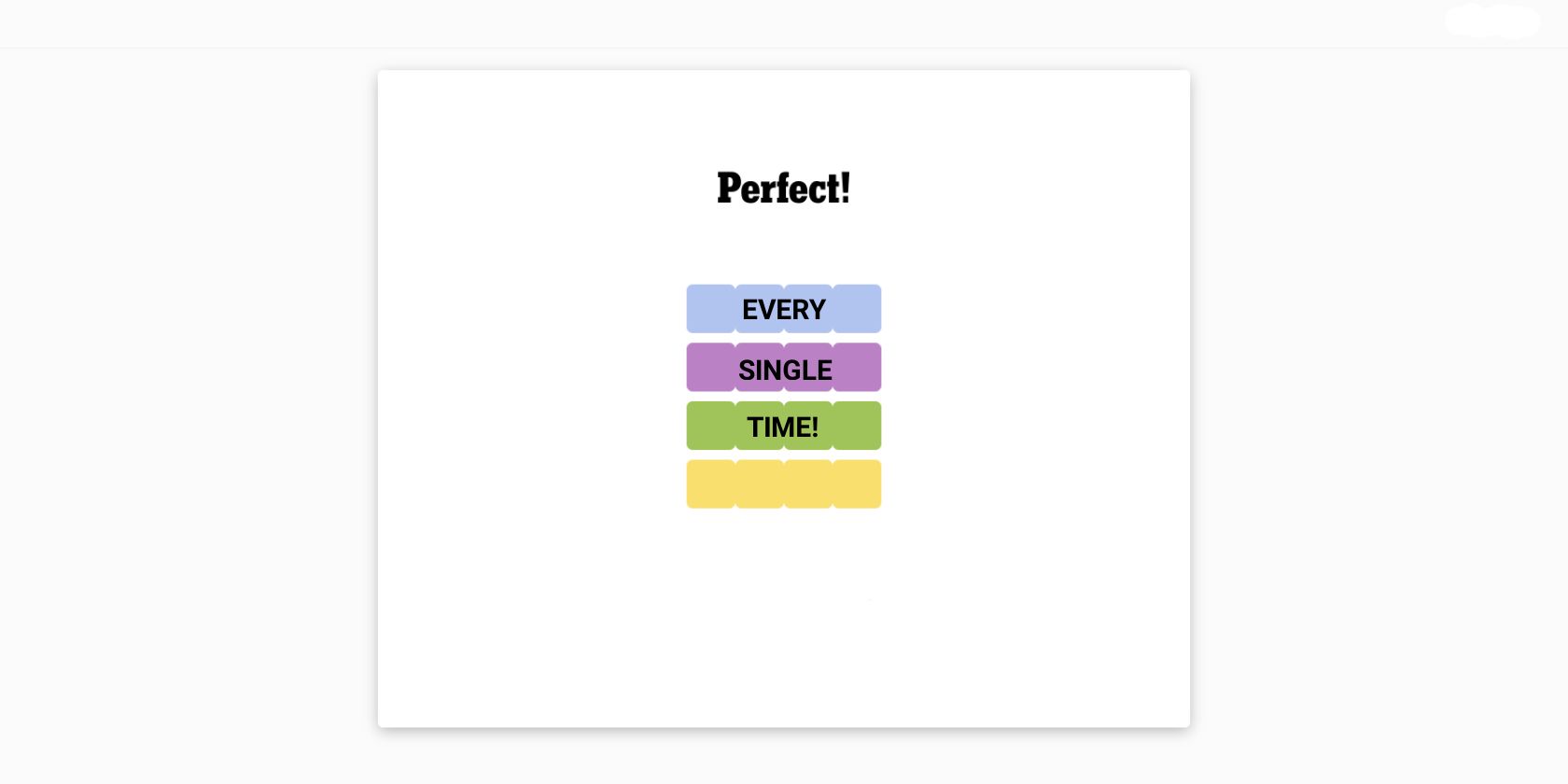Key Takeaways
- The RTX 4070 Ti Super & 4070 Super GPUs are powerful & moderately priced, with a $200 difference.
- The RTX 4070 Ti Super has better overall performance; the RTX 4070 Super is better value for money.
- Despite the increased performance, the Ti Super GPU has similar power consumption, while both have exceptional idle power performance.
As sure as the tides and the moon, every other year, new Nvidia GPUs hit the market. While that means there are more options, Nvidia’s naming scheme can cause some confusion.
In addition to launching its 40-Series GPUs with Ti branding, Nvidia has also included a “Super” variant in the mix. So, which one is the better choice, the RTX 4070 Super or the RTX 4070 Ti Super?
RTX 4070 Super vs. RTX 4070 Ti Super
Despite sounding similar, the two GPUs have enough differences to justify two different products. Launched at CES 2024, these GPUs are more powerful than their older RTX 40-Series siblings and rather reasonably priced, too.
Hardware Specifications
Before we get into specifics, let’s take a look at the spec sheet.
|
RTX 4070 Super |
RTX 4070 Ti Super |
|
|---|---|---|
|
Price |
$599 |
$799 |
|
CUDA Cores |
7,168 |
8,448 |
|
Ray Tracing Core |
56 |
66 |
|
Tensor Cores |
224 |
264 |
|
Base Clock |
1.98GHz |
2.34GHz |
|
Boost Clock |
2.48GHz |
2.61GHz |
|
Memory Clock |
1,313MHz |
1,750 MHz |
|
Memory Type |
GDDR6X |
GDDR6X |
|
Standard Memory Config |
12 GB |
16 GB |
|
Memory Bus |
192-bit |
256-bit |
|
Memory Bandwidth |
504 GB/s |
672 GB/s |
|
TGP |
220 W |
285 W |
As you can see, for a $200 bump in price, more graphics power is up for grabs. The RTX 4070 Ti Super is the most powerful RTX 4070 you can buy, with the RTX 4070 Super in third place behind the regular RTX 4070 Ti.
This power is most evident when looking at the compute power Nvidia claims for both GPUs. Both GPUs get the same generation of shader, ray tracing, and tensor cores, the only difference being the number of cores.
However, that difference means that the RTX 4070 Ti Super’s shader and ray tracing cores are rated for 44 TFLOPs and 102 TFLOPs, respectively, with the tensor cores coming in with 706 TOPs. This is a significant performance boost over the RTX 4070 Super, which gets 36 TFLOPs and 82 TFLOPs on its shader and ray tracing cores, respectively, and a total of 568 TOPs of compute power from the tensor cores.
There is also a clear difference between the GPUs when it comes to VRAM, memory bus, and memory bandwidth. The 4070 Ti Super’s 16GB will deliver better performance and theoretically offer better future-proofing than the 4070 Super’s 12GB. Furthermore, the 4070 Ti Super’s wider memory bus (256-bit vs. 192-bit) and superior memory bandwidth (672GB/s vs. 504GB/s) mean faster data transfers, which is vital for high-resolution gaming.
Since both GPUs are built on the same Ada Lovelace architecture, the software support is practically identical. The only difference is the RTX 4070 Ti Super gets two 8th-Generation Nvidia Encoders (NVENC) compared to the sole NVENC in the RTX 4070 Super.
Monitor support is also identical between the two GPUs. You can run up to four monitors: three via DisplayPort and one over HDMI. Resolution options are identical: 4K at 240Hz or 8K at 60Hz with Display Stream Compression (DSC enables monitors and TVs to use resolutions they wouldn’t typically handle) and HDR.
Power Consumption and Efficiency
Despite being significantly more powerful, the RTX 4070 Ti Super doesn’t draw that much power over the RTX 4070 Super. Nvidia presented some surprising power numbers for the RTX 4070 Ti Super that not only highlight the power efficiency of the Ada Lovelace architecture both GPUs use but also suggest the RTX 4070 Ti Super might not be as much of a power hog as you’d expect. It’s good to see, given the power issues that plagued the RTX 4090—so much so that MakeUseOf editor Hamlin Rozario actually regrets buying one.
For example, the RTX 4070 Ti Super and RTX 4070 Super draw 12 and 11 watts of power when idle, respectively. This difference also applies to video playback, where both GPUs clock in 17 and 16 watts, respectively.
The average gaming draw is a bigger difference, coming in at 26 watts between the RTX 4070 Ti Super (226W) and RTX 4070 Super (200W). However, the biggest difference in power consumption is between the two cards’ total graphics power (TGP). The RTX 4070 Ti Super can draw up to 285W, while the RTX 4070 Super can only draw 220W.
This indicates that the RTX 4070 Ti Super will scale much better and have more power than the RTX 4070 Super. Consequently, Nvidia recommends using a 700 W power supply with the Ti Super compared to a 650 W power supply for the Super variant.
Pricing
As mentioned above, the two GPUs are only $200 apart, with the RTX 4070 Ti Super priced at $799 and the RTX 4070 Super priced at $599. Now, depending on the manufacturer, the price gap will widen a bit, but that’s about it. Thankfully, Nvidia didn’t go with as high a price in the RTX 4070 Super lineup as it did for the RTX 4080 Super.
The Super variant RTX 4070 GPUs fetch far better value as they’re priced the same as their non-Super predecessors at launch. These are still expensive GPUs, but considering the performance boost, the price being the same isn’t as bad as you’re still getting a fair bit of performance for your money’s worth.
That said, if you’re upgrading from an older GPU, you might have to consider getting a new PSU to run these cards. Yes, they’re comparatively more efficient, but you still need enough headroom on your power supply to power your CPU and other internals properly. A good PSU can also add a few bucks to your overall bill, so be mindful of your choice.
Gaming Performance Compared
As you can probably guess, the RTX 4070 Ti Super is the better of the two cards. You’re almost guaranteed to get faster performance in just about any workload, from gaming to rendering. Just how much faster the RTX 4070 Ti Super goes over the RTX 4070 Super is a different matter altogether.
Depending on the game you’re playing, you can expect a difference of around 10 FPS in 1440p Ultra settings. So, if all you want a new GPU for is to crush those games, the RTX 4070 Super isn’t that far behind its Ti Super variant.
However, all those extra cores and increases in TFLOPs and TOPs do come in handy when dealing with other workloads, especially 3D rendering and AI-based tasks. From a long list of open-source AI image generators that you can run locally to all sorts of different AI models, the RTX 4070 Ti Super is far better at handling AI-related workloads. Photo and video editing and any encoding-related workloads will also run significantly better on the RTX 4070 Ti Super.
Which GPU Should You Buy?
As always, the key to your purchase decision lies in your specific requirements and budget. The RTX 4070 Super is the better value-for-money proposition here. So, if all you’re looking to do is play 1440p games comfortably with the best graphics possible, the RTX 4070 Super will do the job while also saving you money.
However, if your demands extend beyond gaming or if you’re gaming at a higher resolution (or on an ultrawide), the RTX 4070 Ti Super is the better choice. Sure, it’s going to burn a bigger hole in your wallet, but it’s the better long-term choice if you’re looking to get the best performance possible while still getting the most for your money from Team Green.





